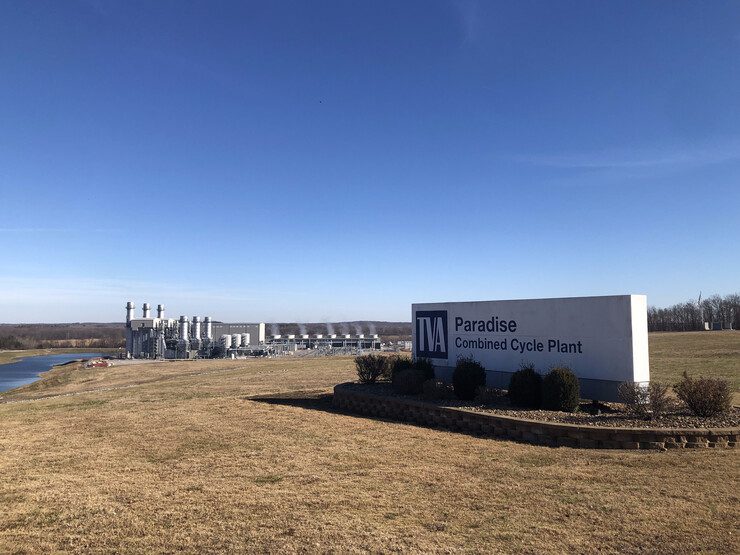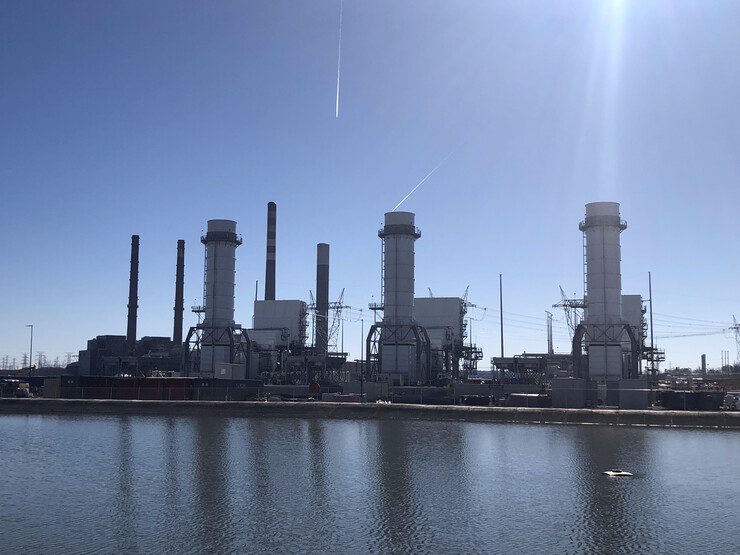Three Combustion Turbines Added to TVA’s Paradise Site, More to Come at Other Locations
The Tennessee Valley Authority (TVA) said three new natural gas–fired units entered commercial operation on Dec. 31 at the Paradise Combined Cycle Plant near Drakesboro, Kentucky (Figure 1).

“Natural gas is an important part of our transition to a carbon-neutral future while maintaining reliability,” TVA President and CEO Jeff Lyash, said in a statement on Jan. 2 announcing the achievement. “These state-of-the-art units will allow us to respond quickly to load demand and improve flexibility as we add more renewable energy, which is not always available on demand.”
“These units will start from a cold start to full load in 10 minutes and 27 seconds, putting approximately 750 MW on the grid,” Benny Fooshee, senior project manager with TVA, said in an audio interview released with the announcement. “There’s been a lot of hard work from a lot of good people at this site, and a thank you to all that have contributed,” he added.
Paradise: A Top Plant
The Paradise Combined Cycle Plant was originally built as an 1,100-MW facility, completed in April 2017. It was recognized as a POWER Top Plant award winner that year. The combined cycle plant was designed to partly replace the coal-fired Paradise Fossil Plant, which came online in 1963 and had at one time been Kentucky’s largest power generation station. Units 1 and 2 of the Fossil Plant, each with a generation capacity of 704 MW, were retired in 2017. The 1,150-MW Unit 3, which began operating in 1970, was permanently shut down in February 2020.
The three new combustion turbines (CTs) at the Paradise site join three other CTs that began operating in July at TVA’s Colbert site in northern Alabama. TVA said that together the additions bring almost 1,500 MW to the grid that didn’t exist last winter. “It couldn’t happen at a better time,” Paradise Plant Manager Jim Phelps said in another audio interview. “We’ve had a mild season so far, but we do know we’ve got cold weather ahead, and it’s right on time.”
Phelps noted that the units have fast-start capability and can be operated remotely. “It’s a great addition to the campus here at Paradise,” he said. “They’re going to be a real advantage for the folks at the SOC [System Operations Center] in Chattanooga as far as being able to get power on the grid quickly. We have it right here at a site that’s manned 24/7, so I expect them to be extremely reliable with the additional oversight they’re going to have.”
More New Gas-Fired Additions to Come
The new Paradise units (Figure 2) are part of TVA’s plan to add more than 3,800 MW of generation to the grid by 2028. “Many of TVA’s new CTs [combustion turbines] are replacing older, less efficient units,” TVA General Manager of Major Projects Jamie Cook said in a statement. “Natural gas units are cleaner than coal-fired generation. We can also operate them when other sources of generation, like solar, aren’t available. They supplement those sources with reliable power when we need it most.”

At a meeting in August, TVA’s board of directors approved $15 billion in investments over the next three years to build additional generation and upgrade the existing system. TVA plans to bring 500 MW of new capacity online in 2024 at its Johnsonville site, and in November, it asked the public to provide input on the proposed construction and operation of a simple cycle CT plant in Lowndes County, Mississippi. The location, known as the New Caledonia (NCG) site, is an approximately 63-acre existing parcel of federally owned property managed by TVA about 10 miles northeast of Columbus.
The NCG site is a former CT facility, originally constructed in 1998 and operated for several years by a private company. The company dismantled the site in 2007, removing the original CTs. The study area for the NCG project’s environmental assessment is 145 acres and includes the entire proposed CT property as well as the adjacent substation property, which remains in operation. TVA is considering constructing and operating an approximately 500-MW CT facility at the same brownfield location as the previous generating facility, which would allow TVA to utilize existing natural gas and transmission infrastructure.
Non-Gas Alternatives Also Part of TVA’s Long-Term Plans
“Our region’s future is bright,” Lyash said in a statement on Aug. 24. “The challenge is finding the right balance in changing conditions that are fiscally responsible while ensuring that we can provide the power you need over the next 30 years.”
Aside from its gas-fired units, TVA is aggressively working to add more than 10,000 MW of new solar energy by 2035. Meanwhile, its first battery storage facility is under construction in Vonore, Tennessee, and Lyash has been very vocal about TVA’s interest in adding new nuclear units to its energy mix. In fact, TVA is working in collaboration with GE Hitachi Nuclear Energy (GEH), Ontario Power Generation, and Synthos Green Energy to advance the global deployment of GEH’s BWRX-300 small modular reactor (SMR).
Yet, TVA is doing more than just adding new generation to meet growing needs. It also plans to offset approximately 30% of new load growth in the next 10 years through energy efficiency and demand response programs. TVA said last year that it will invest $1.5 billion through fiscal year 2027 in energy efficiency and demand response programs to help accomplish those offsets.
“It took us 90 years to build our current power system, which positively changed the lives of millions,” Lyash said in August. “In the next 30 years, we will have to double or triple the current systems at a speed unlike any other time in TVA history to ensure we can continue to provide affordable, reliable, resilient, and sustainable energy to fuel the region’s economic growth.”
—Aaron Larson is POWER’s executive editor (@POWERmagazine).